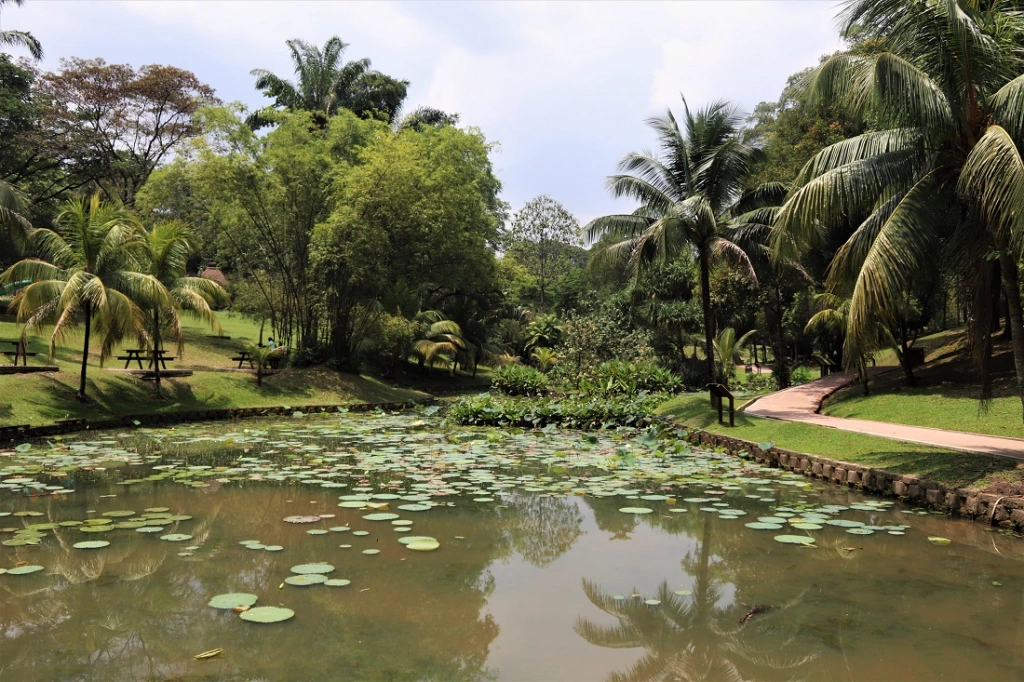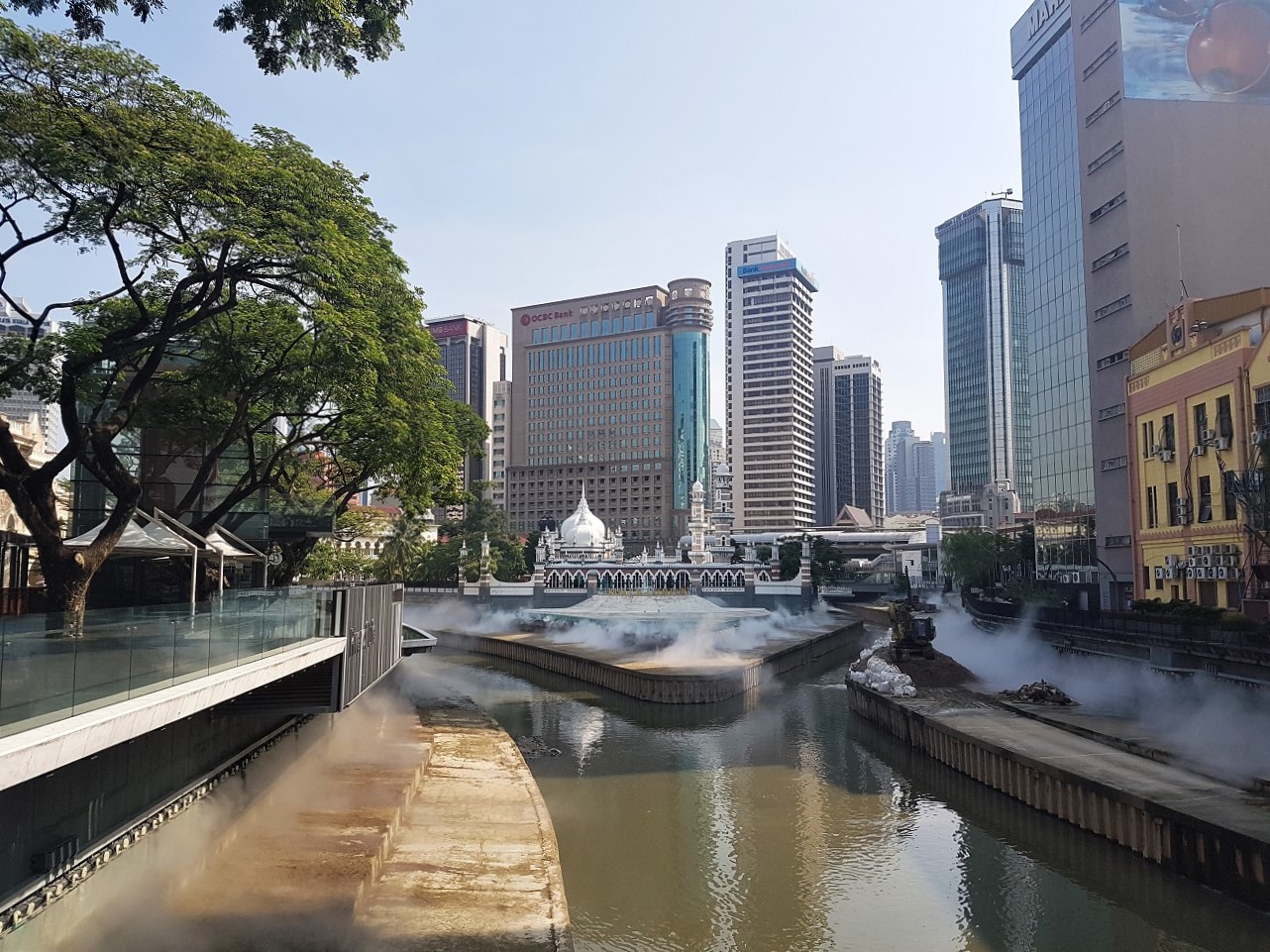In the run up to my trip to Jordan, I began reading TE Lawrence’s The Seven Pillars of Wisdom, in which the former British army officer recounts his time in the region supporting the Arab Revolt during the First World War.
In his memoir, Lawrence also raves about the beauty of Wadi Rum, a vast desert in southern Jordan that boasts astonishing rock formations and the place I planned to spend a night in a Bedouin camp.
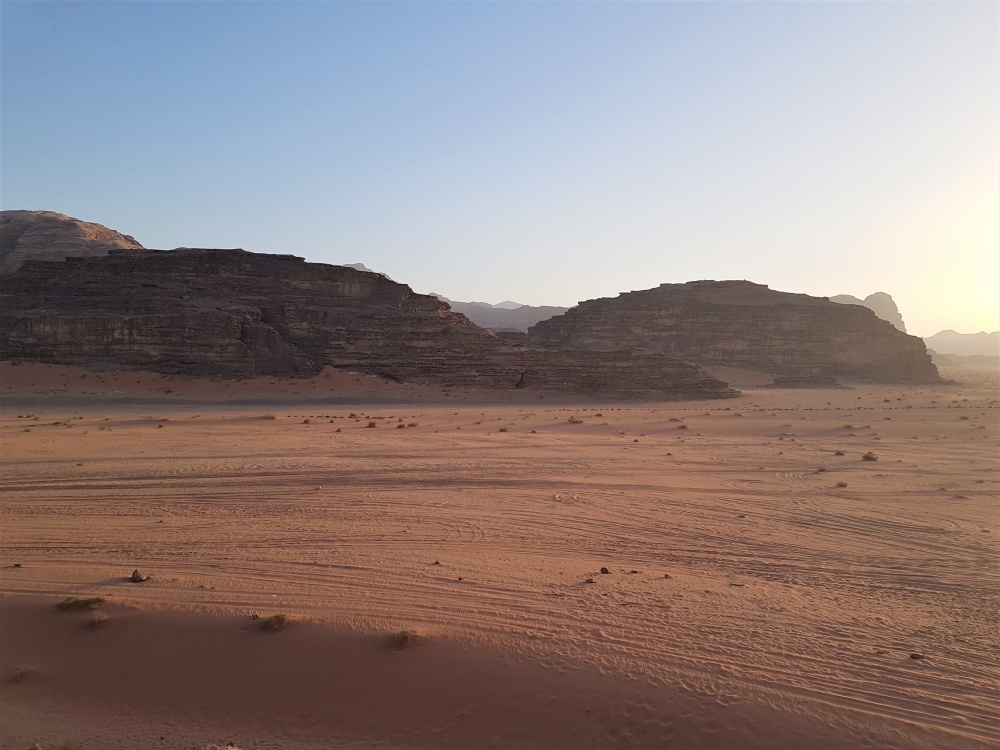
Unfortunately, The Seven Pillars of Wisdom turned out to be a crushing bore and I only got halfway through before my trip (I eventually finished it a few months later in between other books), which meant I learned very little about Lawrence’s thoughts on Wadi Rum.
I, however, had ample opportunity to form my own opinions.

We travelled to Wadi Rum from Petra by bus, and as we approached the valley, the scenery began to change.
Camels roamed freely by the roadside and the terrain became increasingly desert-like, with enormous rock formations jutting up from the sandy floor.
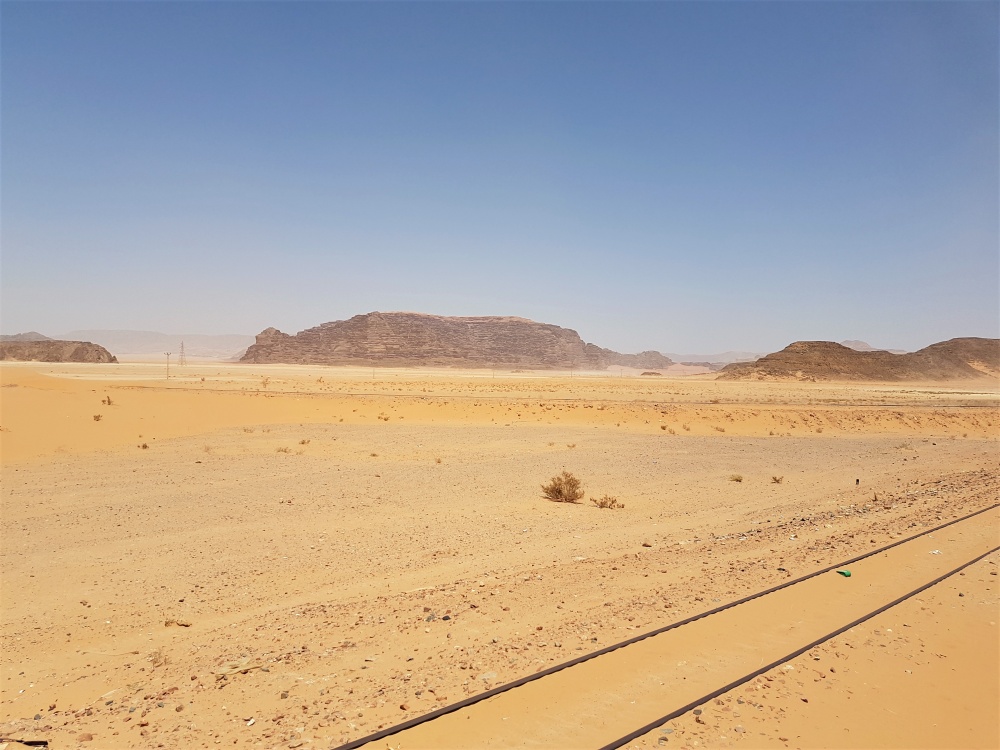
Our first port of call was Wadi Rum Station, where an Ottoman train was ambushed on the tracks of the Hejaz Railway in 1916 by members of the Arab Revolt.
The perfectly-preserved Al Hijaz Steam Train (below) is rather an odd sight, standing all on its lonesome in the middle of the desert, surrounded as far as the eye can see by sand and rocks.
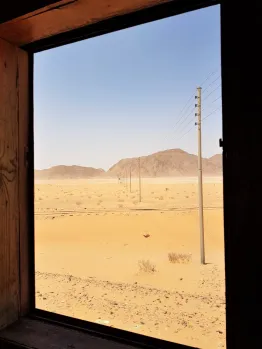
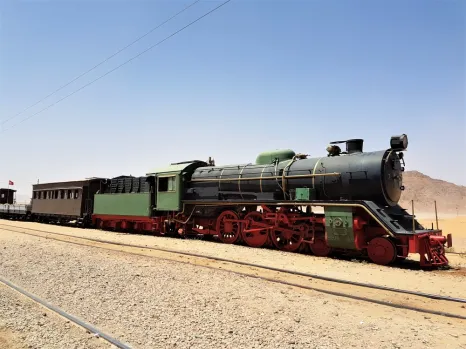
We spent some 20 minutes looking around this curious relic, taking the opportunity to pop inside the wood-panelled carriage that was open to visitors, before continuing to the Wadi Rum Visitor Centre.
There, we headed up to the viewing platform to take a look at some of the desert’s most famous rock formations, including the iconic and impressive Jebel Makhrad, otherwise known as the Seven Pillars of Wisdom after Lawrence’s book (below).
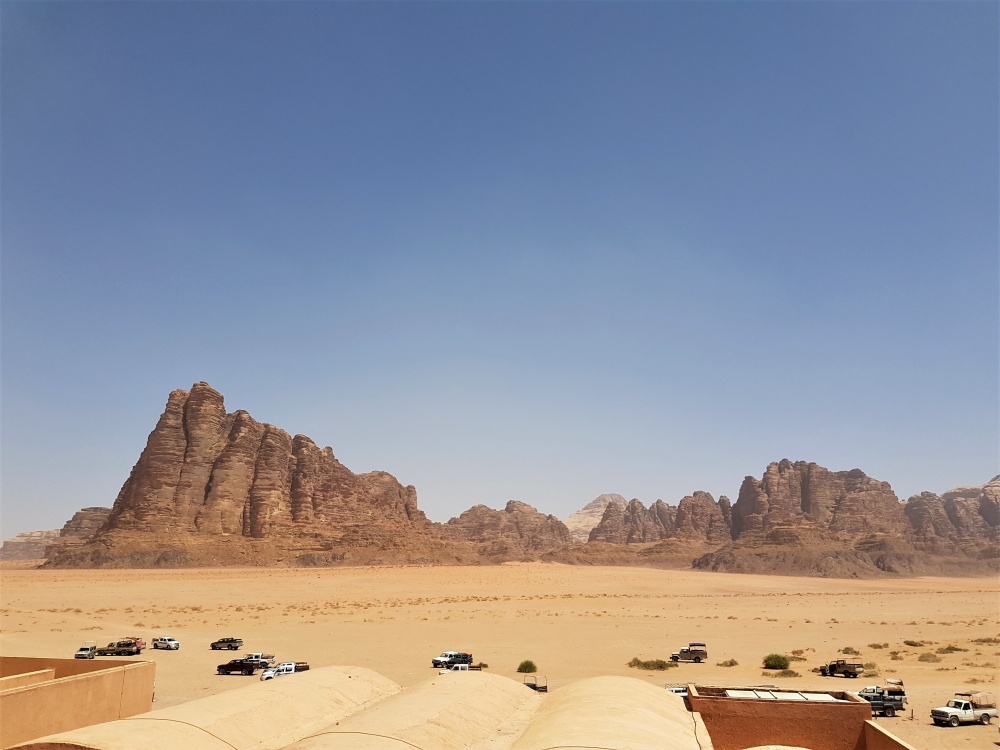
After soaking up the views, we made our way to our home for the night – a Bedouin campsite in the desert, consisting of a series of tents that included a large seating area, a dining room and 14 bedrooms.
As we arrived at the camp (below), we were offered some tea by our Bedouin hosts, and then spent a couple of hours relaxing, away from the searingly hot sun.
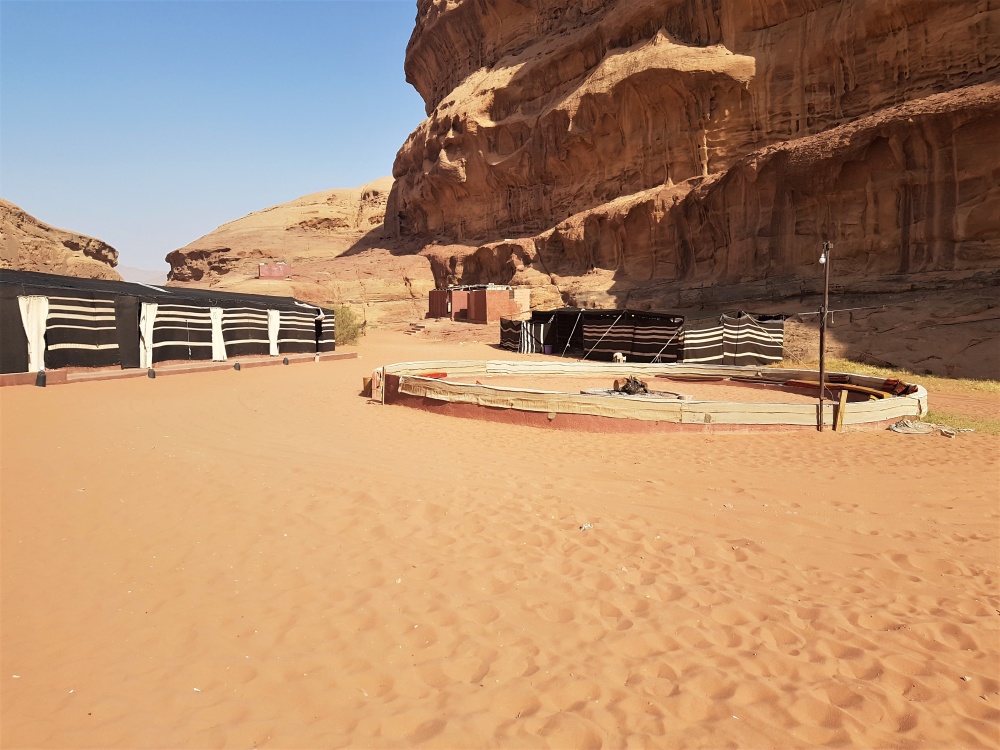
In the early evening, we hopped in a jeep for a tour of Wadi Rum. As we drove around, I was taken aback by the vivid hue of the orangey-red desert sand and the magnificent rose-red rock formations.
It’s a beautiful place and I was surprised by how many (albeit pretty dry) shrubs there were growing amid the barren landscape.

At Jebel Umm Ulaydiyya, we stopped by a small Bedouin camp, opposite a huge sand dune.
We got out of the jeep and slowly climbed the arduously steep dune (a real thigh burner), and when we eventually reached the top, sat down to enjoy the splendid view and relax.
Afterwards, we made our way to the Bedouin camp for tea and stopped to take a look at the images of Lawrence of Arabia (above) and King Faisal carved into a nearby rock.
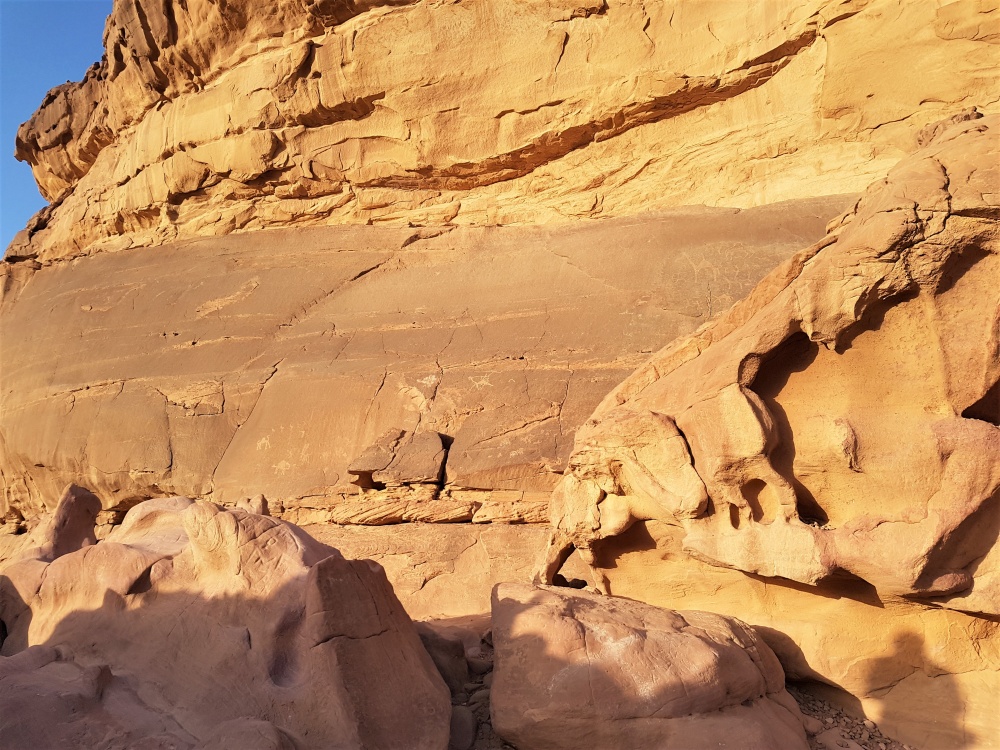
We hopped back in the jeep to continue our desert adventure, stopping at a small raised viewing platform that boasted fabulous views of the valley below.
From there, we carried on, stopping again by another large rock to take a look at a series of inscriptions carved into the stone a few thousand years ago.
I was particularly taken by the wonderful camels depicted on the rock face (you can just make them out in the photo above) and was amazed they’d survived for so long.

We continued our tour through the desert, enjoying the delightful scenery around us and stopping for a final time to climb a large rock, from which we watched the sun go down.
The sunset was sensational (below), and once the sun had disappeared, we clambered down from the rock and sat on the desert floor, where we had tea with our Bedouin guides.
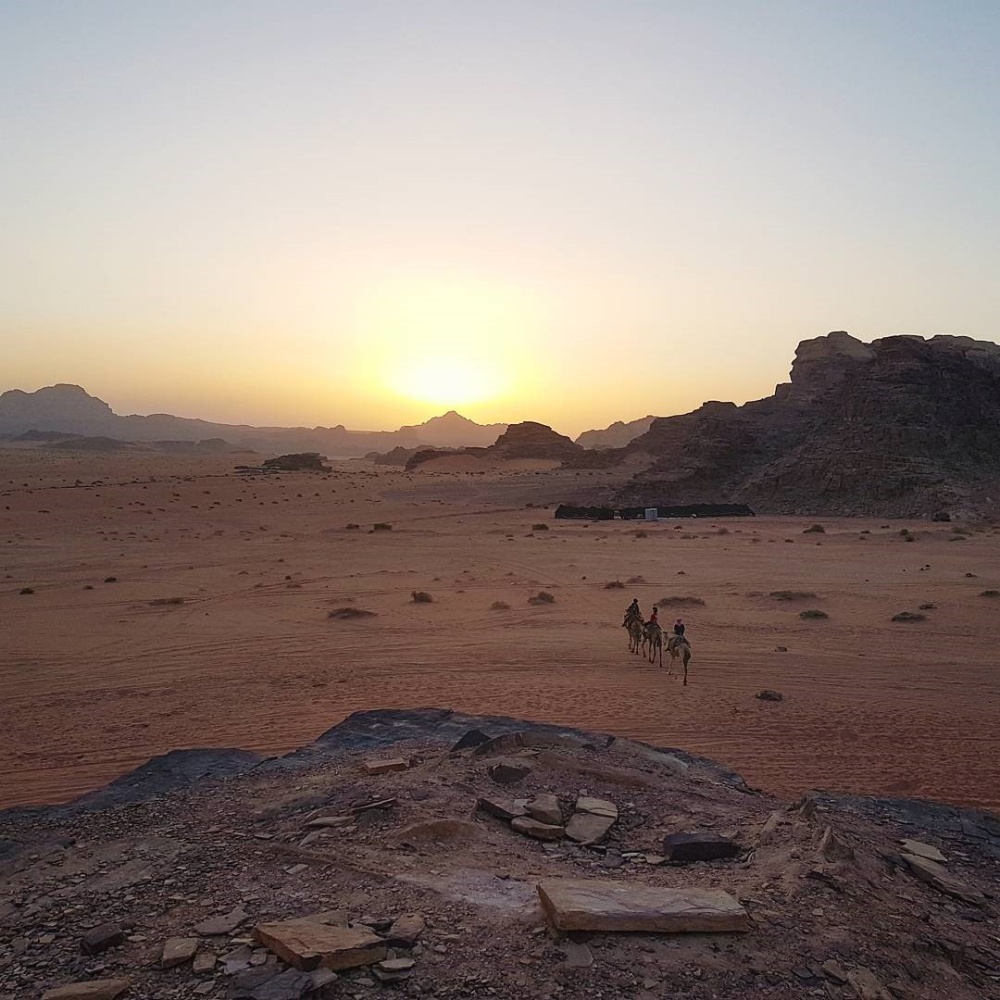
It was lovely sitting with the Bedouin, sipping our tea and chatting. The desert was so still and peaceful, it felt as though we were the only souls for miles.
I could have happily stayed there for hours, but as it was almost dinner time, it was time to head back to camp.
Our tour through the desert had lasted two-and-a-half hours, but I enjoyed it so much, it had whizzed by and I was surprised to discover how long we’d been out.
Back at the camp, we watched as our Bedouin hosts uncovered our dinner, which was buried in a pot under the sand, and carried it into the dining room, ready for serving.
Our hosts piled my plate high with food – a mix of spiced chicken and goat, rice, potato and carrots, served with flat bread, yoghurt, baba ganoush, hummus, and a tomato and cucumber salad. It was delicious and filling.
At bedtime, a few of us brought our mattresses out into the campfire area, where we slept under the stars.
I’d expected the desert to be silent at night, but it was quite noisy – I could hear dogs barking in the middle of the night, as well as the call to prayer in the early hours of the morning. Nevertheless, I awoke – super relaxed – at 5.30am.
Spending a day and night in Wadi Rum was an incredible experience, and I enjoyed exploring the vast barren valley, learning how the Bedouin have traditionally lived in such a harsh environment, and marvelling at the area’s natural beauty.
I can see why Lawrence of Arabia – among countless others – was so taken with it, it’s a spectacular place and well worthy of the gushing, lyrical praise it’s inspired over the years.





